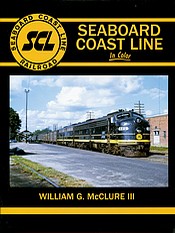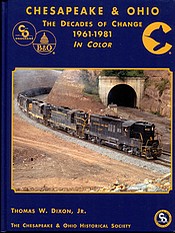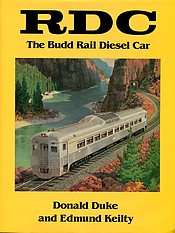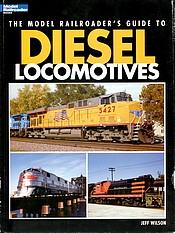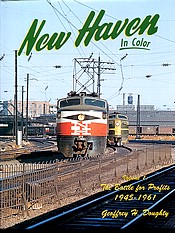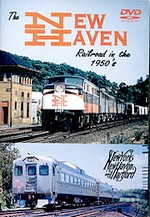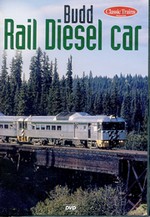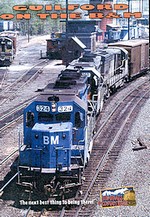|
 |
| |
| Most
commonly, the real trains and railway systems of this
world inspire people to want to recreate them in model
form. However, there are many ways and many channels
through which the incentive spark may catch on; here are
some sources of inspiration that had an impact on me. |
| |
| |
 |
JAMES
RIVER BRANCH LAYOUT & WEBSITE
|
 |
| |
| There are many interesting
websites created by modellers of all scales and gauges,
but when I came across David K. Smith's Z Scale James
River Branch layout and website by chance in late
2011, I was completely fascinated - not only by his
superb modelling efforts but also by the approach (you
might even say philosophy) to modelling in Z Scale which
he formulated. |
| |
| I was so
taken by the simplicity of its trackplan and the
complexity of its visuals, and how it all came
together, that I felt this to be the almost
perfect layout concept for me. If imitation is indeed the
highest form of flattery, as 19th century English author
Charles Caleb Colton put it, then my subsequent
trackplan doodling was nothing but paying the
highest respects to David K. Smith and his
layout. In
the end my planning diverged and morphed into a
double track urban setting layout which ultimately never
got built. But it was the James River Branch that
set the wheels in motion again for me with regard
to Z Scale modelling (which I had dabbled in a bit during the 1990s and
early 2000s).
The layout was
destroyed in a shipping mishap in May 2012, and
when the companion website (which had documented
construction of the layout in great detail) went
offline sometime in 2013, a great source of
modelling inspiration disappeared from the web.
For a while, some of the content could still be
accessed through the Internet Archive,
but as of 2016 even that partial access was no
longer available. However, "DKS" had
pity on the modelling community, and his
James River Branch webpages are back online.
Apart
from specific modelling "clinics" which
come with a lot of friendly and sound advice, the
website also provides a number of trackplans
which Smith had adapted to Z Scale, complete with
parts lists for Märklin, Micro-Track and
Rokuhan.
|
|
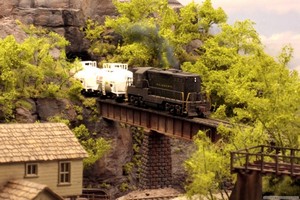
(c) David K. Smith
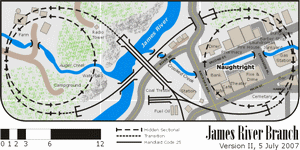
|
|
| |
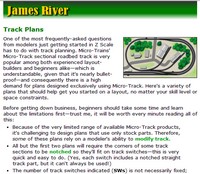 |
|
Beautifully
rendered and enhanced with a portrayal of their
respective main characteristics and layout
building suggestions, they are in themselves a
treasure trove of inspiration. At first primarily dedicated to
documenting the concept and progress of the James
River Branch layout, it ultimately grew to
be a hub of information - and inspiration - on Z
Scale modelling.
Smith's
efforts were miles above what I will ever be
capable of doing (such as scale handlaid track)
but that never bothered me for a second.
|
|
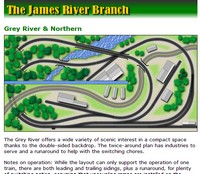 |
|
| |
| Because
what stuck from his layout and his website and
what inspired me was the realization that one of
the prime qualities of Z Scale is, quite simply,
the ability to have a lot of creative fun thanks
to its reduced size. On top of that, David K.
Smith showed that false starts often are, quite simply, part of
the modelling process. And so, many years of accidental modelling later, my Z Scale model
railroading may not bear much outward resemblance
to David K. Smith's James River Branch,
yet most of what is there goes back, in one way
or another, to that small layout and that big
website. In addition to the actual webpages,
another way to get a glimpse of the James
River Branch is an article in Ztrack
Magazine that featured the layout in its
January/February 2013 issue. In addition, Smith's
youtube account features a video with previously unpublished
photographs.
|
|
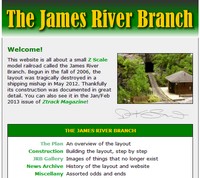
|
|
| |
| |
PROTOTYPE
|
 |
|
| |
| Along with layouts,
modelling books and hobby websites it is,
of course, the prototype itself that
played a huge inspirational part in my Z
Scale modelling. The atmosphere of real
trains is sometimes so concentrated that
one picture alone captures it all, frozen
in one moment of time. And so, in
addition to other material, I started
collecting original slides that reflect
this perfect railroad atmosphere in many
different ways and various settings.
|
| |
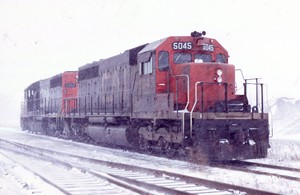
CN SD40, Sarnia
Ontario, 1968
Adrian Wymann Collection
|
|
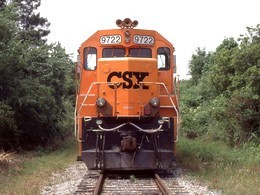
CSX GP40, De Land Fl,
1997
Len Kratz (Adrian Wymann
Collection)
|
|
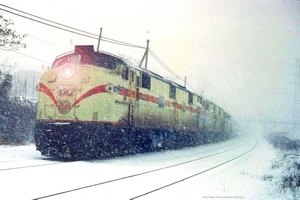
SAL E7, Richmond Va,
1966
Wiley Bryan (Adrian Wymann
Collection)
|
|
| |
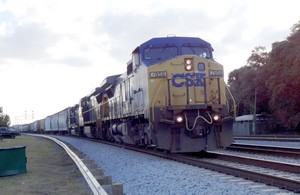
CSX C40-8W, Wildwood Fl,
2014
Adrian Wymann
|
|
Various trips to
the US provided the opportunity
to railfan in person and
introduced me to contemporary
railroading in CSX and Norfolk
Southern territory. Seeing the actual
trains in 1:1 scale trackside
made me realise that Z Scale was
ideal to replicate what I was
seeing: a series of
"railfanning
vignettes".
|
|
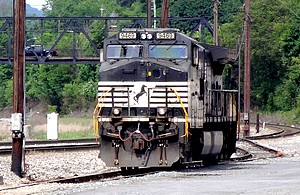
NS C44-9W,
Bluefield WV, 2017
Adrian Wymann
|
|
| |
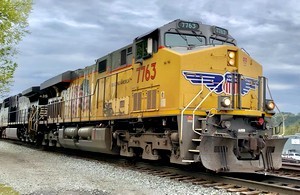
UP ES44AC, Irondale Al,
2022
Adrian Wymann
|
|
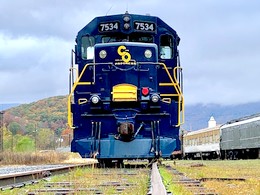
C&O SD40, Clifton
Forge VA, 2019
Adrian Wymann
|
|
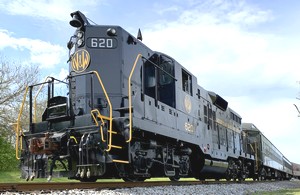
N&W GP9, Spencer NC,
2022
Adrian Wymann
|
|
| |
 |
|
There's more
on how the prototype provides me
with inspiration here. |
|
| |
|
|
| |
 |
BOOKS
|
 |
| |
| There
is, of course, a wealth of information and
inspiration related to railroads and modelling to
be found on the internet, but apart from the fact
that some of this can be rather volatile it's
really hard to beat good old-fashioned books,
both as a source of inspiration and a toolbox for
modelling. |
| |
My first
encounter with North American
railroads that made a deep (and
lasting) impression was by way of
Terry Allen's Encyclopedia of
Model Railways (Octopus,
1979). The book was nothing short
of a revelation and completely
changed my perspective on railway
modelling. It also introduced me
to the colourful North American
motive power and rolling stock,
and how modellers ran trains in a
way that emulated the real thing.
This was followed by a chance
discovery of Aaron Klein's History
of the New York Central System
(Crescent, 1988) in a local
bookstore selling overstock
titles imported to Switzerland
from the US (a business model
typical of the days preceding the
internet and international online
shopping). It provided me with my
first introduction to the history
of a specific US railroad - and
introduced me to the New York
Central and its brilliantly
dynamic "lightning
stripe" paint scheme. I was
eager for more, and the very same
bookstore provided me with a copy
of Geoffrey Allen's North
American Railroads Today
(Trodd, 1990), featuring a more
general overview (and plenty of
colour images). My growing
interest was focused on
Northeastern railroading, and I
found that I could get my hands
on more books through a model
train store specialising in US
models.
|
|
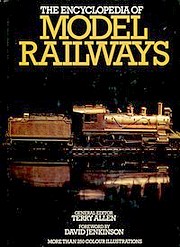 |
|
|
| |
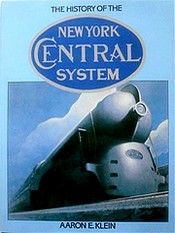 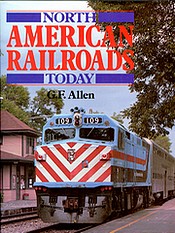 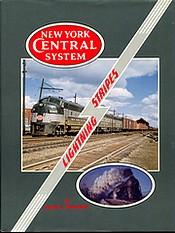 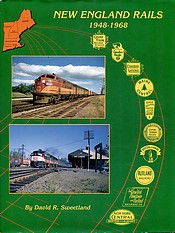 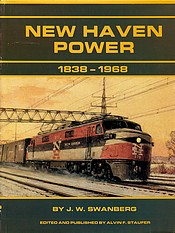
|
| |
| David
Sweetland's Lightning Stripes (Morning
Sun, 1990) and New England Rails
(Morning Sun, 1989) then introduced me to the New
Haven RR with its colourful and pioneering
McGinnis paint scheme, and the fascination was
pushed into top gear by way of Jack Swanberg's
seminal New Haven Power (Staufer, 1988).
All of these books provide brilliant browsing material to
this day and remain a treasure trove of
inspiration.
|
| |
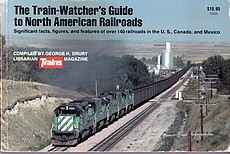 |
|
Two books that
have proven to be definitive
sources of inspiration are George H. Drury's The
Train-Watcher's Guide to North
American Railroads and The
Historical Guide to North
American Railroads. Compiled
back in the 1980s (I bought my
copies in the early 1990s), most
of the contents are therefore
very much out of date - yet
you'll be hard pressed to find a
portrait of railroads (especially
fallen flags) of similar clarity
and concise nature. |
|
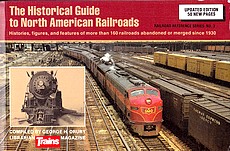 |
|
|
| |
| Both are very easy to
pick up (not the least thanks to their handy
format) but extremely hard to put down. Whilst
you could get lost for hours in the Train-Watcher's
Guide, you can easily spend entire days
perusing the Historical Guide. Both
books have long been out of print, although
Kalmbach published a 3rd edition of the Historical
Guide (effectively merging it with the Train-Watcher's
Guide) in 2013, incorporating Drury's
concept along with most of his maps. |
| |
| Adding
some colour images and
updated information
resulted in a fine book,
but the enlarged (now
coffee table book size)
format somehow lost much
of the original's appeal. Another
casual purchase that
turned out to be a deep
well of inspiration is
Tom Nelligan's Bluebirds
& Minutemen
(Macmillan, 1986). A
portrait of the Boston
& Maine RR between
1974 and 1985, it paints
a fascinating picture of
railroading in New
England.
Although
possibly an Old School
perspective on things, I
feel you will usually not
find the depth (and
accuracy) of information
and inspiration online
that you can find in a
good book - and
accordingly, my
collection of books
focusing on specific
railroads or aspects of
railroading continues to
grow to this day.
|
|
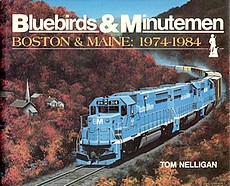 |
|
|
|
|
| |
|
| |
| |
 |
(ARCHIVAL) FILM
|
 |
|
| |
| As a
complement to books, film can be very inspirational too.
Even when modelling contemporary railroads, and unless
what you are modelling runs close to where you live, film
captured by a third party going trackside for you allows
you to see trains move - the quintessential form of
inspiration. Documentary-style collections can also
provide insight and be highly informative. |
| |
|
| |
| |
FIRST Z SCALE MODEL
|
 |
|
|
| |
| Depending on era and area, there are a
number of iconic North American locomotives that
transcend personal taste, but EMD's F7 is
probably the all-time all-American emblematic
diesel (labelled as such by accomplished railroad
expert and author Brian Solomon in his 2011 Electro-Motive
E-Units and F-Units, which fittingly
carried the tagline "illustrated history of
North America's favorite locomotives"). The fact that both Micro-Trains and
Märklin decided to model the F7 as their first Z
Scale locomotive is therefore both a logical
choice as well as confirmation of the special
appeal the F7 holds. And it certainly worked with
me when I first became aware of Märklin's Z
Scale US models, by way of a shop window display,
in 1984.
|
|
| |


 The models - Märklin Chessie and
Amtrak, Micro Trains New York Central
|
|
Märklin's Chessie freight train set,
with its colourful F7, most definitely caught my
attention and planted a fascination with these
minute models. At the time, however, the price
tag was way too steep for my 20-year old self.
A few years later, in
late 1990, the price tag hurdle was lowered to
affordable levels when a big toy store in Zürich
sold off their Z Scale models at half price - and
since I could pick up a complete Amtrak train (F7
and six coaches) in one easy swoop, the
opportunity was too good to be missed.
But for another 15
years, the F7 would remain the sole ready-to-run
locomotive available in Z Scale.
It ultimately did grow
rather long in the tooth, but the F7 was a huge
inspiration and pull to get into Z Scale.
|
|
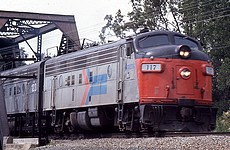
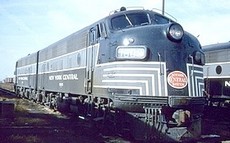 The real deal -
Amtrak FP7 in 1976 and New York Central F7 in
1961
|
|
| |
| |
|
THE "FOR LATER" BOX(ES)
|
 |
|
| |
| I
assume every modeller has them - one or
(more likely) more boxes full of kits and
all sorts of bits and pieces that were
bought at a point in time in the past for
a layout or a module or a project that,
at least so far, has not materialized. I had indeed accumulated
a fair amount of Z Scale items over the
past decade, and it was very convenient
to actually have those items stashed away
and ready at hand when the inspirational
flash for my Z Scale layout hit.
Rummaging through these boxes will almost
always also turn up items I actually
forgot I had - and rediscovering them
often comes with another inspirational
spark.
|
|
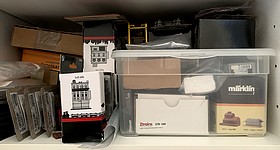
|
|
| |
| And just as
importantly, going through these boxes also meant
that at least some of those items stored
"for later" actually got put to use. |
| |
|
SCENES "CRYING OUT TO BE
MODELLED"
|
|
|
| |
| Every modeller knows
them - scenes that pop up, often out of the blue,
and jump at them with that instant sensation that
they "cry out to be modelled". |
| |
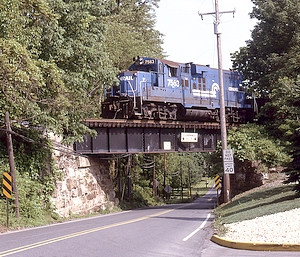 |
|
The
sensation can hit in the
real world, whilst
thumbing through the
pages of a book, looking
at a photograph or slide,
or maybe watching some
footage. Sometimes the
feeling dissipates almost
as quickly as it hit, but
some of those scenes
stick. After
some consideration, many
of those inspirational
flashes are ultimately
not followed up on
because attempting to
recreate them in model
form would be extremely
challenging or even
outright impossible. And
then there are those
scenes whose
straight-forward
simplicity is what makes
them so inspirational -
such as a Conrail GP10
crossing a short girder
bridge over a secondary
road, beautifully framed
by lush green foliage.
It's a beautifully
compact scene yet it
oozes railroad
atmosphere.
It
is highly unlikely that a
GP10 will ever be
available as a Z Scale
model, but in reality any
model will do to
recapture that atmosphere
in model form.
|
|
|
|
|
|
| |
| It's on my to do list - another
characteristic of scenes begging to be modelled.
They may never actually materialize, but they
provide a general boost of modelling inspiration
anyway. |
| |
|
| |
 |
| |
    
|

BACK TO MAIN INDEX PAGE

|
page
created 30 November 2014
page updated 29 December 2024
|























